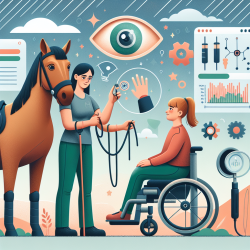Key Findings from the Research
The study examined the relationship between per pupil spending (PPS) and various injury characteristics among students in New Jersey's CTE programs. The research revealed several noteworthy trends:- Higher PPS was associated with a higher incidence of less severe injuries, such as bruises and cuts, while lower PPS correlated with more severe injuries like fractures.
- Schools with higher PPS reported more injuries treated at outpatient clinics, whereas lower PPS schools had a higher proportion of injuries treated at hospitals or emergency departments.
- Personal protective equipment (PPE) usage did not significantly differ between higher and lower PPS schools, indicating a potential area for uniform improvement across all spending levels.
Implications for Practitioners
As a practitioner, these findings offer actionable insights to enhance safety protocols in CTE settings. Here are some strategies to consider:- Invest in Safety Training: Ensure that all students and staff receive comprehensive safety training, regardless of the school's PPS. This training should cover the proper use of PPE and safe handling of equipment.
- Enhance Injury Reporting Systems: Implement or improve injury reporting systems to capture detailed data on all incidents. This data can help identify trends and areas needing attention.
- Advocate for Increased Funding: Use the research findings to advocate for higher PPS in your school district. Highlight the correlation between higher spending and reduced severity of injuries to make a compelling case for increased funding.
- Focus on Preventive Measures: Develop and enforce preventive measures tailored to the most common types of injuries reported. For example, if cuts and lacerations are prevalent, focus on improving the safety of cutting tools and providing adequate protective gear.
Encouraging Further Research
While the study provides valuable insights, it also underscores the need for further research to explore additional factors influencing injury rates in CTE programs. Encouraging collaboration between schools, researchers, and policymakers can lead to more comprehensive safety strategies and better outcomes for students.Conclusion
By integrating the findings from this research into your practice, you can significantly improve the safety and well-being of students in CTE programs. Continued advocacy for increased funding and ongoing research will further enhance these efforts, ensuring a safer learning environment for all.To read the original research paper, please follow this link: Injuries among young workers in career-technical-vocational education and associations with per pupil spending.










